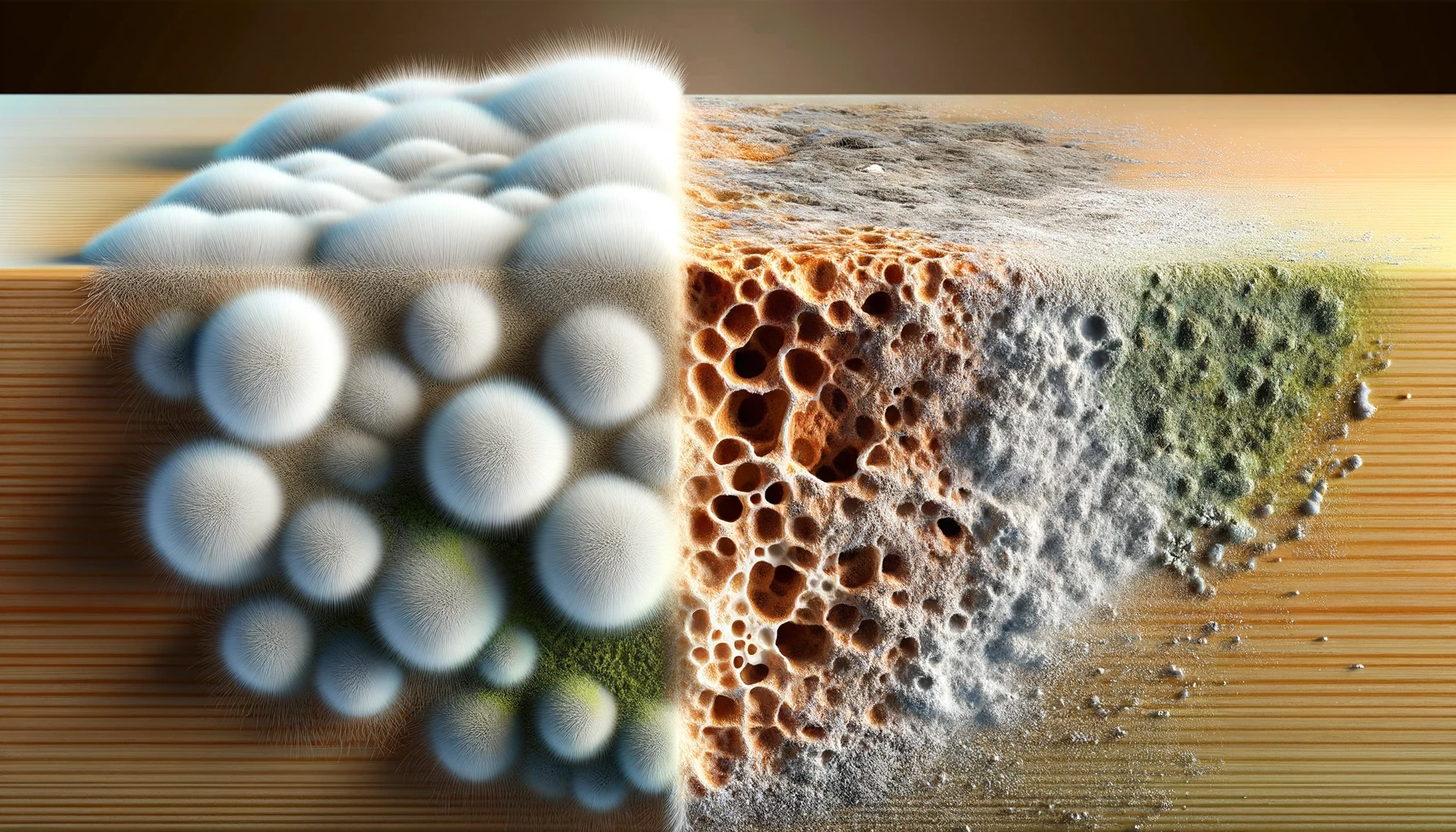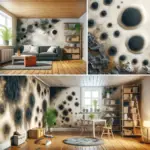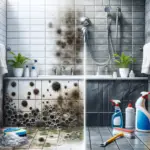Have you ever been unsure if the fungi in your home were mold or mildew? Although they are often confused and used interchangeably, it is essential to comprehend their distinctions, as this will allow for precise identification and more effective removal.
Mold and mildew grow in damp places, yet distinct properties differentiate them from one another. Understanding these differences can be instrumental in eradicating the fungus from your home.
What is Mold?
Mold is a fungus that can form in damp and humid environments, and it has multicellular filaments or threads known as hyphae; these spores are a crucial part of the species’ reproductive cycle. These spores are spread through the air and can land on surfaces where they begin to grow, mainly if the proper environmental conditions exist.
Under a microscope, mold appears fuzzy or wool-like in texture and displays various colors such as black, green, yellow or white. Additionally, it has the potential to produce a musty odor that can indicate high levels of moisture, leading to possible mold growth. To thrive, mold necessitates organic food sources like wood, paper carpet, or insulation.
Mold Spores
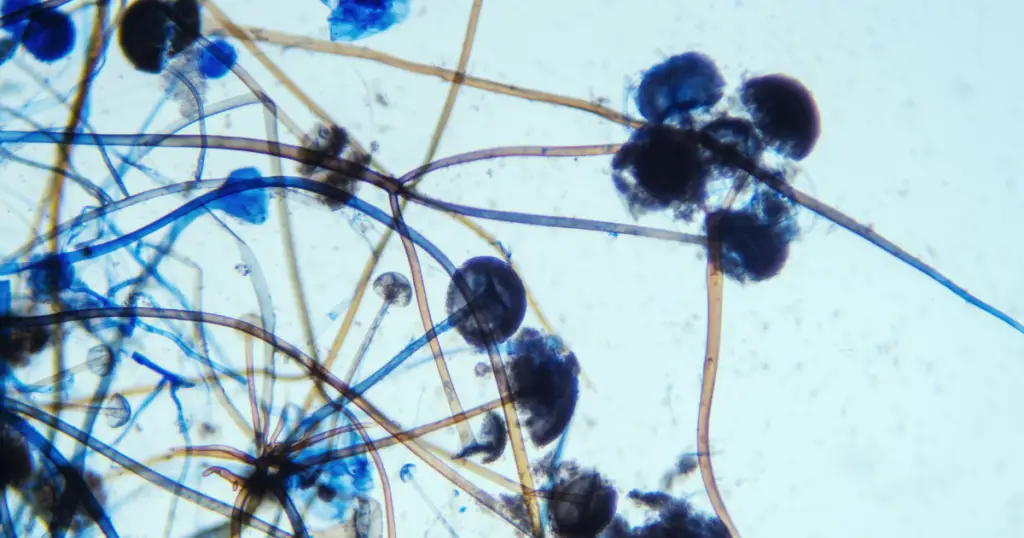
Mold spores are microscopic particles released by a variety of types of fungi. These tiny spores become airborne and can be spread easily through air currents and air conditioning systems, allowing them to travel quickly to other locations and contaminate surfaces. They thrive in wet or moist environments where they can consume organic material to grow, reproduce and cause damage to materials like wood and drywall.
They vary in size depending on the type of mold, but most range from 3-50 microns in diameter. When inhaled or ingested, the spores can also cause health issues such as allergies- especially black mold spores, asthma attacks, and even severe respiratory infections. To prevent their spread and reduce the risk of these health issues, it is important to maintain proper ventilation and dehumidifying measures in areas with an increased risk of moisture.
What is Mildew?
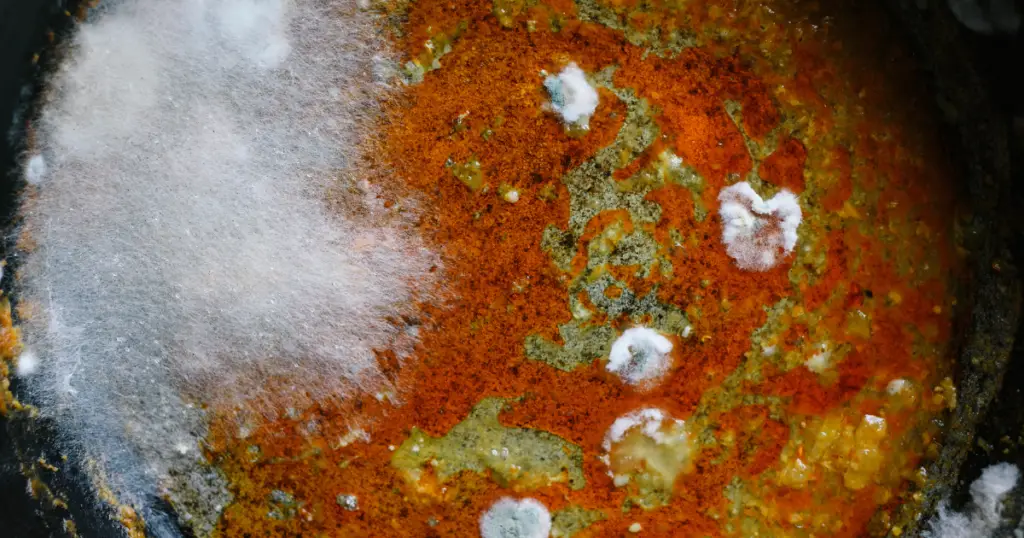
Mildew is a type of fungus from the Ascomycota phylum. It is also called “mold” or “mildew disease.” Mildew typically appears as white, grayish patches on surfaces such as paper, fabric, concrete, and wood.
The presence of mildew is usually due to excessive moisture and humid conditions. This usually occurs in moist places like bathrooms, basements, and attics. Mildew can be recognized by its musty solid odor and yellow/brown stains on book bindings, walls and ceilings. The microscopic spores can spread through the air when disturbed and move to new surfaces that may become contaminated.
Mildew Spores
Mildew spores are tiny, single-celled organisms that are part of the Ascomycota phylum and belong to the same family as mold. Unlike larger molds, mildew is less visible and typically appears as white, powdery patches on surfaces like paper and fabric. These patches consist of thousands of tiny particles, each measuring between 2-4 microns in diameter.
This microscopic fungi thrives in damp conditions, such as those created by leaks or poor ventilation in areas like basements, bathrooms and attics. When inhaled or ingested, these airborne particles can cause irritation and health problems such as asthma attacks and eye infections.
It is essential to maintain good ventilation and optimum RH (Relative Humidity) level to prevent the spread of its spores. Regular cleaning with a disinfectant can also help eliminate potential mildew colonies before they become a problem.
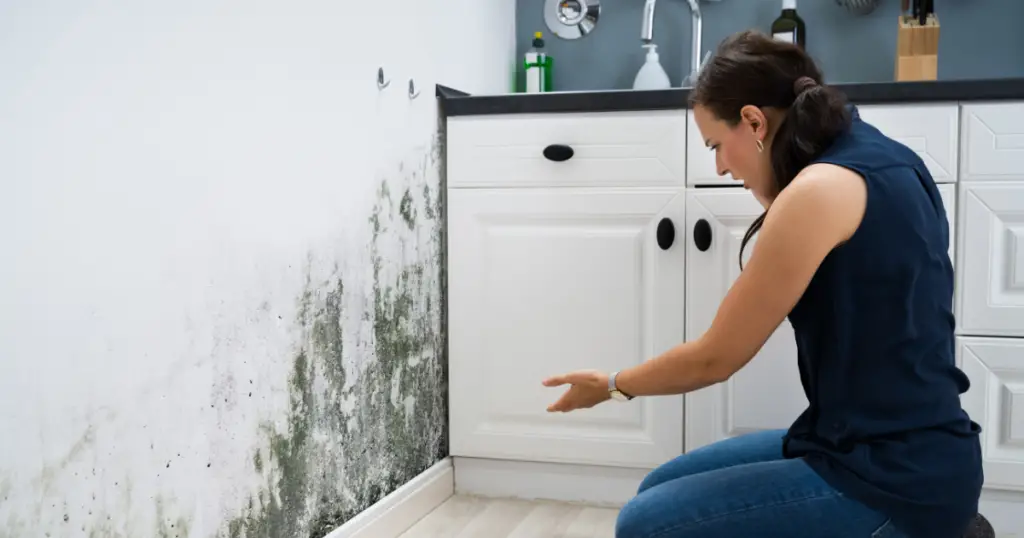
How do Mold and Mildew Grow?
Mold reproduces by releasing spores into the environment. When they come in contact with a surface that has moisture and organic material, they can begin to grow and spread. The type of mold will depend on the environmental conditions such as levels of light, temperature and dampness.
Mildew grows by releasing microscopic spores into the air. When they come in contact with moisture and organic material, they develop into colonies that can spread quickly across any surface. The growth of mildew depends on environmental conditions such as high RH, temperature and light.
Mold and mildew are common fungi that thrive in damp areas, such as shower walls and other damp surfaces. To find mold and mildew, look for discolored patches in areas where water collects and moisture remains on the surface. Because they feed on organic matter, they can easily spread across these damp materials until their food source is depleted. They reproduce quickly by releasing spores into the air, which allows them to travel to new areas of your home.
Most types of mold needs a warm and damp environment to grow. It will usually thrive in temperatures between 68°F to 86°F and needs high RH of over 70%. Mildew, on the other hand, prefers cooler temperatures and will usually survive in temperatures as low as 50°F. It also grows better in environments with higher RH levels, with an optimal range of 80% to 90%.

Differences between Mold vs Mildew
Mold and mildew may appear similar, but they are two distinct forms of fungi. Now that you better understand the distinction between both types, it’s time to learn more about their differences.
Mildew, a type of rot fungus with a greyish-white powdery appearance, is easy to manage and typically causes minor, aesthetic damage. It thrives in damp environments like basements, bathrooms, and attics; these may manifest as yellow or brown discoloration on bookshelves, ceiling tiles, and walls. Mildew can also be found in spots on paper products such as fabric sheets, window sills within kitchens or bathrooms, and indoor potted plants. Aureobasidium, Botrytis, and Rhizopus are among the most widely observed mildews that exist today.
Mold may take on a range of colors, such as black, green, and red. It has an unmistakable musty smell that quickly spreads throughout the area and can cause severe structural damage. Not only does it reduce indoor air quality but also produces unattractive stains. Mold often grows in common areas like bathrooms, crawl spaces, kitchens, windowsills, indoor plants – even mattresses or furniture! Additionally, mold flourishes within warm moist environments yet remains viable without high levels of humidity present.
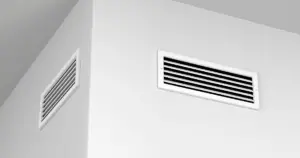
How can you Prevent Mold and Mildew Growth?
The best way to prevent mold and mildew growth is to maintain a dry environment. This means fixing any plumbing leaks or seepage points that cause humidity; increasing ventilation by opening windows and doors; using exhaust fans to help lower the RH levels in the air; and drying any wet surface immediately.
Additionally, it’s important to regularly inspect your home for mold and clean any areas where they are present. In severe cases, you may need to call in a professional mold remediation service.
What are the health problems related to Mold and Mildew?
Mold Exposure
Prolonged exposure to mold and mildew can have serious health effects. People with asthma and other respiratory conditions may be particularly prone to experiencing allergic reactions and breathing difficulties due to the airborne spores of these fungi. These reactions can range from minor skin irritation such as redness, itchy eyes, or a runny nose to more severe respiratory issues like difficulty breathing or lung infection.
Exposure to high mold levels over an extended period can also increase the risk of chronic fatigue, headaches, and even depression. To avoid any potential health risks, damp areas of the home must be regularly inspected to prevent mold growth and checked for adequate ventilation.
Mildew Exposure
Both Mold and Mildew can cause minor respiratory problems to severe reactions. Prolonged exposure to mildew may lead to eye irritation, coughing, and sneezing.
In extreme cases, mildew can cause an allergic respiratory reaction similar to a mold allergy. If you suspect you may have been exposed to toxic levels of mildew, you must seek medical attention as soon as possible.

How to Remove Mold and Mildew?
Both mold and mildew can be removed through a combination of cleaning and drying. Mildew removal is an easy task and you can do it yourself. To treat mold you will need a longer and more detailed process. Before starting the process of removing mold and mildew, it is essential to ensure your safety by wearing a breathing mask, waterproof gloves, and eye protection.
Mildew Removal
Eliminating mildew can be a relatively easy task. To remove mildew, all you need is some store-bought mildew cleaner and a scrub brush; spray, let stand for five to 10 minutes, and then start scrubbing until the stain has been removed. Afterward, use either paper towels or cloths to wipe off any remaining traces of mildew residue.
Mold Removal
Clean mold can be a lengthy process that requires meticulous care and attention but is a critical process to ensure the health and safety of your home. Here are a few steps to help you get rid of mold:
- Identify any areas of visible mold growth and note any existing moisture problems.
- Determine the source of moisture that could be causing mold growth.
- Isolate the affected area to minimize contamination.
- Wear protective clothing, including masks, gloves, boots, and goggles when cleaning up mold.
- Eliminate and removed unwanted materials, such as wallpaper, rotted, drywall, wood, and fabrics.
- Clean all surfaces with a solution of one part bleach to four parts water or an EPA-approved fungicide.
- Scrub all surfaces thoroughly using a stiff brush to remove visible mold growth.
- Vacuum all affected areas using a HEPA filter vacuum cleaner to capture remaining spores and particles from the air that can’t be removed by scrubbing alone.
- After cleaning, consistently inspect the area for any signs of mold regrowth and take action quickly if needed.
How Mold and Mildew can be Tested?
If you suspect that your home may be harboring hidden mold or mildew growth, a professional mold testing service can help. During the test, samples of air and visible surfaces will be taken and analyzed to detect whether any potentially hazardous levels of mold are present in the home.
Professional Help
If the test results indicate that mold or mildew levels are above what is considered safe, hiring a professional mold remediation service may be necessary. These services can safely and effectively remove any visible or hidden problem and prevent future infestations.
[/et_pb_text][/et_pb_column][/et_pb_row][/et_pb_section]

